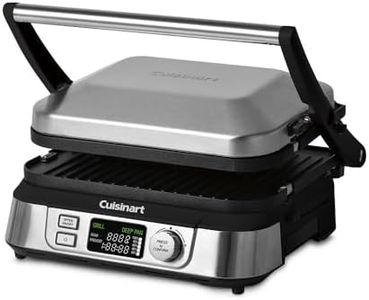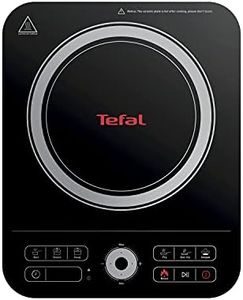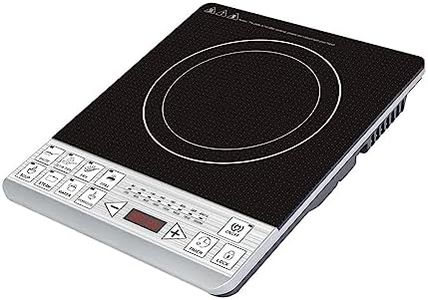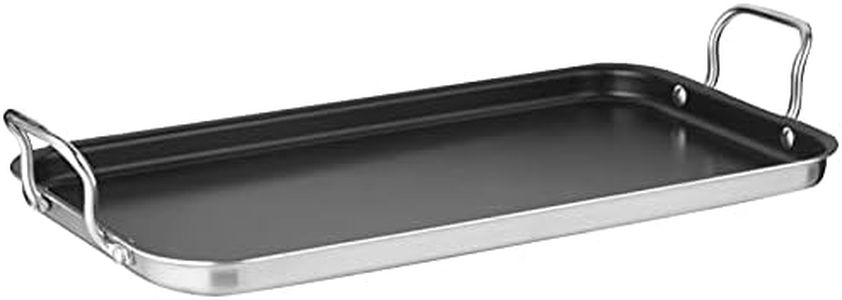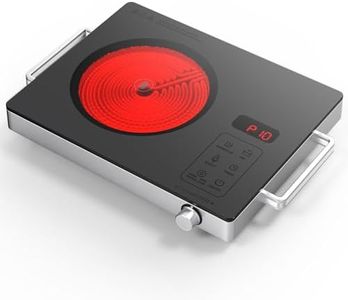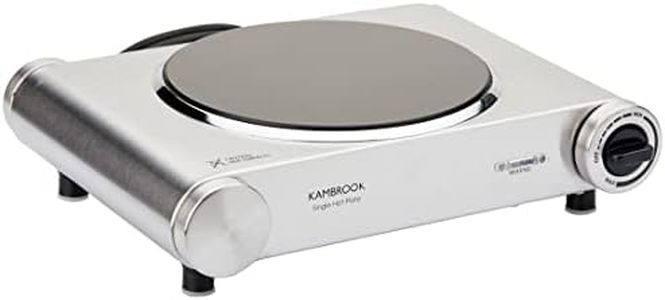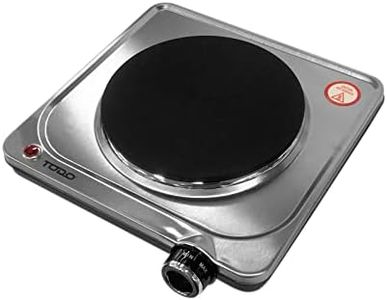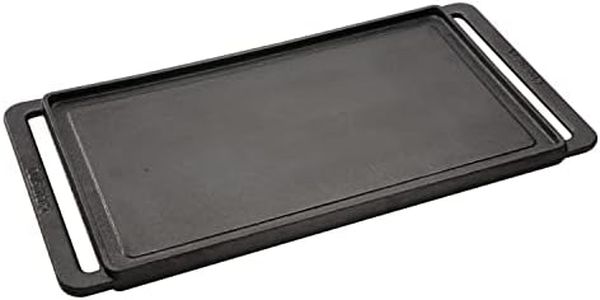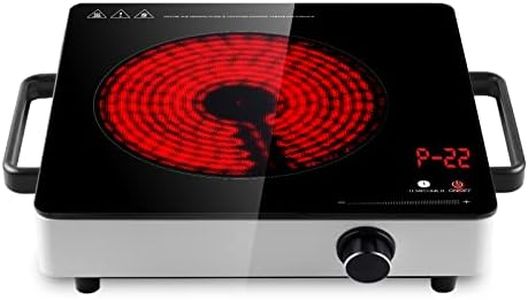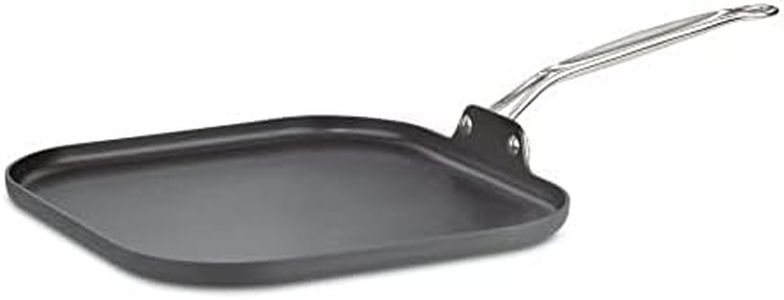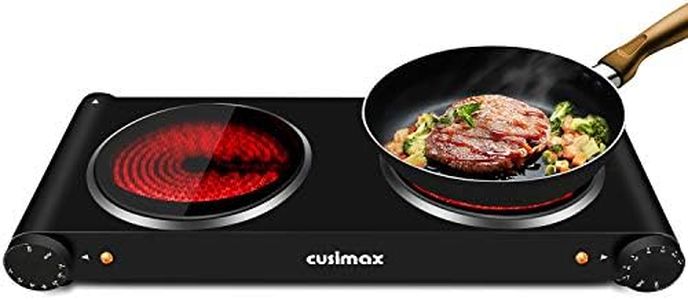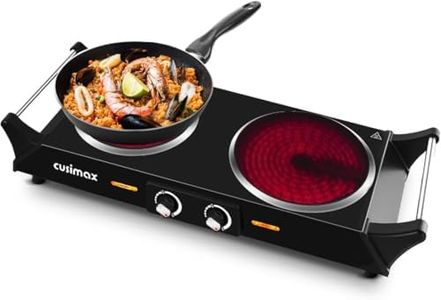We Use CookiesWe use cookies to enhance the security, performance,
functionality and for analytical and promotional activities. By continuing to browse this site you
are agreeing to our privacy policy
10 Best Hot Plates
From leading brands and best sellers available on the web.Buying Guide for the Best Hot Plates
Choosing a hot plate can make your cooking experience more flexible and convenient. They are great for small kitchens, dorms, camping, or as an extra cooktop when your stove is overloaded. When picking the right hot plate, think about what you cook most often, how much space you have, and how portable it needs to be. Understanding the main specifications will help you choose a hot plate that matches your needs for heating speed, cooking style, and safety.Heating TechnologyHeating technology refers to how the hot plate generates heat, and this influences its performance, energy efficiency, and compatibility with your cookware. The main types are coil (electric), infrared, and induction. Coil hot plates are basic and work with most pans, but may heat unevenly. Infrared plates heat up faster and offer more even cooking, but still work with any flat-bottomed cookware. Induction hot plates use electromagnetic energy for quick, precise, and energy-efficient heating, but require special ferrous (magnetic) cookware. If you already own cookware or want the fastest, safest option, induction might be best. For general use and broader compatibility, coil or infrared are a safe bet.
Number of BurnersThis indicates how many separate cooking surfaces the hot plate has, which determines how many dishes you can cook at once. Single-burner models are compact and ideal for solo use, travel, or tight spaces, while double burners are better for making more elaborate meals or cooking for more than one person. Choose according to how much cooking space you typically need—if you often cook multiple dishes, a double burner is more convenient.
WattageWattage measures how powerful the hot plate is, affecting both how quickly it heats up and how high the maximum temperature can get. Hot plates usually range between 750 and 1800 watts per burner. Lower wattages are fine for reheating or simmering, but if you want to boil water, sear meat, or cook quickly, look for higher wattage. Think about your typical cooking—if you do lots of high-heat tasks, pick something on the higher end.
Temperature ControlThis spec tells you how precisely you can manage the heat level on your hot plate, often via a dial (with numbers or settings) or sometimes with specific temperature displays. Basic models may offer low, medium, and high, while advanced ones give you finer or digital control. If you only need to heat or boil things occasionally, simple controls are OK. If you want to simmer sauces or cook more complex recipes, precise temperature control is useful.
Size and PortabilitySize affects how easily the hot plate fits in your space, how portable it is, and what size pots and pans you can use. Smaller hot plates suit tight spaces, travel, or occasional use, but may not fit large cookware. Larger hot plates are better for family meals or bigger pots, but check your countertop size to avoid overcrowding. Think about where you'll store it and how often you’ll be moving it around.
Surface MaterialSurface material impacts cleaning, durability, and heating consistency. Common options include stainless steel, glass, or ceramic. Stainless steel is durable but can get stained; glass and ceramic look sleek and are easier to clean, but can be more fragile. Consider your preference for maintenance and how careful you'll be using and storing the plate.
Safety FeaturesSafety features like automatic shut-off, non-slip feet, indicator lights, and overheat protection are important, especially in busy or shared spaces. Automatic shut-off and overheat protection prevent accidents if you forget to turn off the plate. Non-slip feet keep the unit steady, and indicator lights show when it's hot. If you have kids, pets, or plan to use the hot plate in shared areas, prioritize these features to reduce risk.

